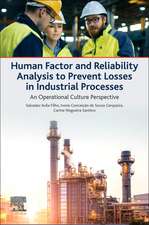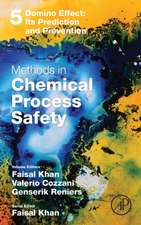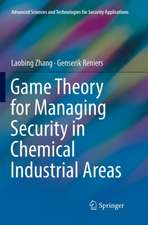Physical Security in the Process Industry: Theory with Applications
Autor Gabriele Landucci, Nima Khakzad, Genserik Reniersen Limba Engleză Paperback – 3 feb 2020
- Discusses how to achieve inherent physical security using a scientific approach
- Explores how to take adequate add-on physical security measures
- Covers risk assessment tools and applications for practical use in the industry
- Demonstrates how to optimize security decisions using security models and approaches
- Considers economic aspects of security decisions
Preț: 846.73 lei
Preț vechi: 1189.43 lei
-29% Nou
Puncte Express: 1270
Preț estimativ în valută:
162.02€ • 169.51$ • 134.59£
162.02€ • 169.51$ • 134.59£
Carte tipărită la comandă
Livrare economică 27 martie-10 aprilie
Preluare comenzi: 021 569.72.76
Specificații
ISBN-13: 9780444640543
ISBN-10: 0444640541
Pagini: 252
Dimensiuni: 191 x 235 mm
Greutate: 0.44 kg
Editura: ELSEVIER SCIENCE
ISBN-10: 0444640541
Pagini: 252
Dimensiuni: 191 x 235 mm
Greutate: 0.44 kg
Editura: ELSEVIER SCIENCE
Public țintă
Academics and students in the field of physical security (and safety: (safety and) security scientists and (safety and) security engineers; chemical engineers; security (and safety) managers from chemical companies (including process and oil & gas), pharmaceutical companies, nuclear industry, hazmat transportation; engaged citizensCuprins
1. An introduction to physical security
2. History of terrorist attacks to critical infrastructures involving hazardous materials
3. Principles and concepts for physical security
4. Physical security risk assessment tools and applications
5. Secure culture and security management models
6. Advanced design of physical security systems
7. Economic aspects of security decisions
8. General conclusions
2. History of terrorist attacks to critical infrastructures involving hazardous materials
3. Principles and concepts for physical security
4. Physical security risk assessment tools and applications
5. Secure culture and security management models
6. Advanced design of physical security systems
7. Economic aspects of security decisions
8. General conclusions
























